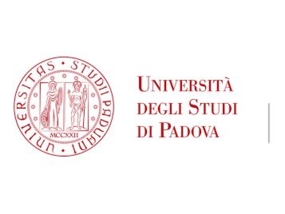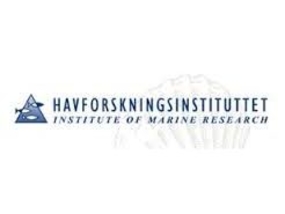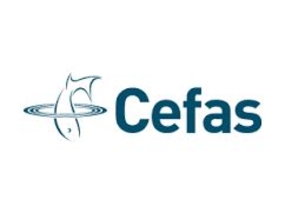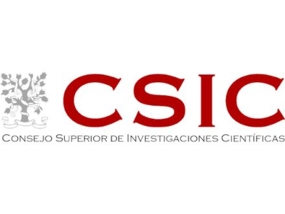VIVALDI-related articles published in 2018
Manuscript: Comparative 16SrDNA gene-based microbiota profiles of the Pacific oyster (Crassostrea gigas) and the Mediterranean mussel (Mytilus galloprovincialis) from a shellfish farm (Ligurian Sea, Italy). (Vezzulli L, Stagnaro L, Grande C, Tassistro G, Canesi L, Pruzzo C)
Published in Microbial Ecology, 2018, doi: 10.1007/s00248-017-1051-6
VIVALDI Partner involved: UNIGE (IT)
Bacterial community (microbiota) associated to the pacific oyster Crassostrea gigas and the Mediterranean mussel Mytilus galloprovincialis were evaluated and compared before and after commercial depuration using last generation DNA sequencing technology. The study highlighted the ineffectiveness of commonly employed depuration practice in removing microbial pathogens naturally occurring in the aquatic environment (e.g. Vibrio species) from bivalve tissues.
---
Manuscript: A literature review as an aid to identify strategies for mitigating ostreid herpesvirus 1 in Crassostrea gigas hatchery and nursery systems. (Rodgers C., Arzul I., Carrasco N. and Furones Noza D.)
Published in Reviews in Aquaculture, 2018, doi: 10.1111/raq.12246
VIVALDI partner involved: IRTA
An understanding of husbandry strategies and any associated risk factors is important for designing management control measures that can reduce mortality in Pacific oysters, caused by OsHV-1. The type of culture facility can inform on the potential pathways that could lead to the entry of a pathogen and its survival. Animal features (e.g. age, physiological state, selective breeding programmes), husbandry procedures (e.g. stocking density), the pathogen itself (e.g. pathogenicity, virulence) and environmental effects (e.g. temperature) represent other relevant interconnected factors. Control mechanisms for hatchery or nursery areas are related to movement restrictions, water treatment, virus inactivation, the production calendar and practical farm management decisions. This comprehensive literature review compiles information related to such approaches and also includes the different existing guidelines suggested for control of OsHV-1.
---
Manuscript: Identification of a newly described OsHV-1 μvar from the North Adriatic Sea (Italy) (Miriam Abbadi, Gianpiero Zamperin, Michele Gastaldelli, Francesco Pascoli, Umberto Rosani, Adelaide Milani, Alessia Schivo, Emanuele Rossetti, Edoardo Turolla, Lorenzo Gennari, Anna Toffan, Giuseppe Arcangeli and Paola Venier)
Published in Journal of General Virology, 2018, DOI 10.1099/jgv.0.001042
VIVALDI partner involved: UNIPD
The surveillance activities for abnormal bivalve mortality events in Italy include the diagnosis of OsHV-1 in symptomatic oysters. As little is known about the genetic determinants of OsHV-1 virulence, comparing complete OsHV-1 genomes supports a better understanding of the virus pathogenicity and provides new insights into virus–host interactions.
---
Manuscript: Rapid capture and detection of ostreid herpesvirus-1 from Pacific oyster Crassostrea gigas and seawater using magnetic beads (Anna Toldrà, Karl B. Andree, Edgar Bertomeu, Ana Roque, Noèlia Carrasco, Ignasi Gairín, M. Dolores Furones, Mònica Campàs)
Published in Plos One, 2018, doi: 10.1111/raq.12246
VIVALDI partner involved: IRTA
Ostreid herpesvirus-1 (OsHV-1) has been involved in mass mortality episodes of Pacific oysters Crassostrea gigas throughout the world, causing important economic losses to the aquaculture industry. In the present study, magnetic beads (MBs) were used to capture viable OsHV-1 from oysters and seawater. The experiments confirmed the ability of the MBs to capture viable viral particles. The capture of viable OsHV-1 using MBs is a rapid and easy isolation method and a promising tool, combined with qPCR, to be applied to OsHV-1 detection in aquaculture facilities.
---
Manuscript: Marteilia refringens and Marteilia pararefringens sp. nov. are distinct parasites of bivalves and have different European distributions (R. Kerr, G. M. Ward, G. D. Stentiford, A. Alfjorden, S. Mortensen, J. P. Bignell, S.W. Feist, A. Villalba, M. J. Carballal, A. Cao, I. Arzul, D. Ryder and D. Bass)
Published in Parasitology, 2018, DOI: 10.1017/S003118201800063X
VIVALDI partner involved: CEFAS, IFREMER, IMR
The genetic distinctiveness between two species of a parasite, Marteilia refringens, was demonstrated in this study, which formally defines as separate species: M. refringens, which tends to infect flat oysters, and Marteilia pararefringens, which tends to infect mussels.
---
Manuscript: Vibrio tapetis displays an Original Type IV Secretion System in Strains Pathogenic for Bivalve Molluscs (Graciela M. Dias, Adeline Bidault, Patrick Le Chevalier, Gwenaëlle Choquet, Clio Der Sarkissian, Ludovic Orlando, Claudine Medigue, Valerie Barbe, Sophie Mangenot, Cristiane C. Thompson, Fabiano L. Thompson, Annick Jacq, Vianney Pichereau and Christine Paillard)
Published in Frontiers of Microbiology, 2018, DOI: 10.3389/fmicb.2018.00227
VIVALDI partner involved: CNRS
Comparative genome analysis makes it possible to determine the factors involved in host-pathogen interaction, in particular the relationship between the pathogen Vibrio tapetis and its host mollusc Venerupis philippinarum (clam). This analysis confirmed the presence of a secretion system (T4SS), which plays a central role in host adaptation and virulence. To date, this study is the first to describe the complete T4SS secretion system in pathogenic vibrio molluscs.
---
Manuscript: Temperature modulate disease susceptibility of the Pacific oyster Crassostrea gigas and virulence of the Ostreid herpesvirus type 1 (Lizenn Delisle, Bruno Petton, Jean François Burguin, Benjamin Morga, Charlotte Corporeau, Fabrice Pernet)
Published in Fish and Shellfish Immunology, 2018, DOI: /10.1016/j.fsi.2018.05.056
VIVALDI partner involved: IFREMER
Oyster mortalities associated with the Ostreid herpesvirus type 1 (OsHV-1) have occurred seasonally in Europe when the seawater temperature range reaches 16–24 °C. This study assesses how temperature modulates oyster susceptibility to OsHV-1 and pathogen virulence. Oysters were injected with OsHV-1 suspension incubated at 21 °C, 26 °C and 29 °C and were placed in cohabitation with healthy oysters (recipients) at these 3 temperatures. The major result of this study is that oysters exposed to the virus at 29 °C survived much better (85.7% survival) than at 21 °C and 26 °C (52.4% and 43.9% respectively), reflecting changes in host susceptibility and/or virus virulence.
---
Manuscript: Ecologically realistic model of infection for exploring the host damage caused by Vibrio aestuarianus (Leila Parizadeh, Delphine Tourbiez, Céline Garcia, Philippe Haffner, Lionel Dégremont, Frédérique Le Roux and Marie-Agnès Travers)
Published in Environmental Microbiology, 2018, DOI: 10.1111/1462-2920.14350
VIVALDI partner involved: IFREMER
The increase in frequency of oyster mortality outbreaks associated with the presence the bacteria V. aestuarianus causes since 2012 ineluctable losses for the farmers because this disease affects the adult stage of the animal. To understand the interaction between the pathogen V. aestuarianus and its host, the Pacific oyster, we developed a new "ecologically-realistic" infection model based on experimental immersion. This protocol allowed us to describe the localisation and tissular consequences of this bacteria.
---
Manuscript: Oyster Farming, Temperature, and Plankton Influence the Dynamics of Pathogenic Vibrios in the Thau Lagoon (Carmen LOPEZ-JOVEN, Jean.Luc Rolland, Phylippe Haffner, Audrey Caro, Cécile Roques, Claire Carré, Marie-Agnès Travers, Eric Abadie, Mohamed Laabir, Delphine Bonnet and Delphine Destoumieux-Garzon)
Published in Frontiers of Microbiology, 2018, DOI:10.3389/fmicb.2018.02530
VIVALDI partner involved: CNRS, IFREMER
Various vibrio species have been associated with recurrent mass mortalities of juvenile oysters Crassostrea gigas, threatening oyster farming worldwide. However, the ecology of pathogens in affected oyster farming areas remains scarcely known, which limits our capacity to predict and mitigate disease occurrence. To address this issue, we monitored Vibrio species potentially pathogenic to C. gigas in 2013 and 2014 in the Thau Lagoon, a major oyster farming region in the coastal French Mediterranean. Sampling stations were chosen inside and outside the oyster farms. The abundance of Vibrio species in the water column was similar inside and outside oyster farms, suggesting important spatial dispersion of pathogens in surrounding areas. The results of the study also suggest that a winter reservoir of pathogenic vibrios could contribute to their ecology in this Mediterranean shellfish farming ecosystem.
---
Manuscript: Immune-suppression by OsHV-1 viral infection causes fatal bacteraemia in Pacific oysters (Julien de Lorgeril, Aude Lucasson, Bruno Petton, Eve Toulza, Caroline Montagnani, Camille Clerissi, Jeremie Vidal-Dupiol, Cristian Chaparro, Richard Galinier, Jean-Michel Escoubas, Philippe Haffner, Lionel Dégremont Guillaume M. Charrière, Maxime Lafont, Abigaïl Delort, Agnes Vergnes, Marlène Chiarello, Nicole Faury, Tristan Rubio, Marc A. Leroy, Adeline Pérignon, Denis Régler, Benjamin Morga, Marianne Alunno-Bruscia, Pierre Boudry, Frédérique Le Roux, Delphine Destoumieux-Garzόn, Yannick Gueguen, Guillaume Mitta)
Published in Nature Communications, 2018, DOI : 10.1038/s41467-018-06659-3
VIVALDI partner involved: CNRS, IFREMER
Infectious diseases are influenced by many interacting host and environmental factors. By addressing the complexity of these interactions, we better understand the process underlying Pacific oyster mortality syndrome affecting juveniles of Crassostrea gigas, the main oyster species exploited worldwide. Using experimental infections reproducing the natural route of infection and combining thorough molecular analyses of oyster families with contrasted susceptibilities, we demonstrate that the disease is caused by multiple infections with an initial step of infection by the Ostreid herpesvirus OsHV-1μVar and in a second phase, infection by opportunistic bacteria.
---
Manuscript: Bivalve transcriptomics reveal pathogen sequences and a powerful immune response of the Mediterranean mussel (Mytilus galloprovincialis) (Rebeca Moreira, Pablo Balseiro, Gabriel Forn-Cuní, Massimo Milan, Luca Bargelloni, Beatriz Novoa, Antonio Figueras)
Published in Marine Biology, 2018, doi: 10.1007/s00227-018-3308-0
VIVALDI partner involved: CSIC, UNIPD
The knowledge of the genomes and transcriptomes in bivalves has increased in the last years. All this information is very valuable and allows the study of important problems in the aquaculture industry (such as infectious diseases) from a molecular point of view. In this work we performed a comparative analysis among four aquacultured species: the blue and Mediterranean mussels, and the carpet shell and the Manila clams. We found that the Mediterranean mussel is the most robust species due to the high expression and variability of immune-related genes.
---
Manuscript: Revealing Mytilus galloprovincialis transcriptomic profiles during ontogeny (Rebeca Moreira, Patricia Pereiro, Pablo Balseiro, Massimo Milan, Marianna Pauletto, Luca Bargelloni, Beatriz Novoa, Antonio Figueras)
Published in Developmental and Comparative Immunology, 2018, doi: 10.1016/j.dci.2018.01.016
VIVALDI partner involved: CSIC and UNIPD
One of the reasons for the biological success of mussels is their reproduction strategy. Larval development in bivalves has been a topic of raising interest in the scientific community but it deserves much more attention. In this work we studied the gene expression profile of the larval development of the Mediterranean mussel, from oocytes to juveniles. We were able to find the most important genes in each developmental stage and the point in which the juveniles start to behave as adult mussels. Other interesting finding of this work is that the genes expressed in the mother oocytes are very important for the survival of the larvae.
----
Manuscript: Autophagic processes in Mytilus galloprovincialis hemocytes: effects of Vibrio tapetis (Teresa Balbi, Katia Cortese, Caterina Ciacci, Grazia Bellese, Luigi Vezzulli, Carla Pruzzo, Laura Canesi)
Published in Fish and Shellfish Immunology, 2018, DOI: 10.1016/j.fsi.2017.12.003
VIVALDI Partner involved: UNIGE
----
Manuscript: Microbiota composition and evenness predict survival rate of oysters confronted to Pacific Oyster Mortality Syndrome (Camille Clerissi, Julien de Lorgeril, Bruno Petton, Aude Lucasson, Jean-Michel Escoubas, Yannick Gueguen, Lionel Dégremont, Guillaume Mitta, Eve Toulza)
Published in Biorxyv, 2018, DOI: 10.1101/378125
VIVALDI partner involved: CNRS & Ifremer









